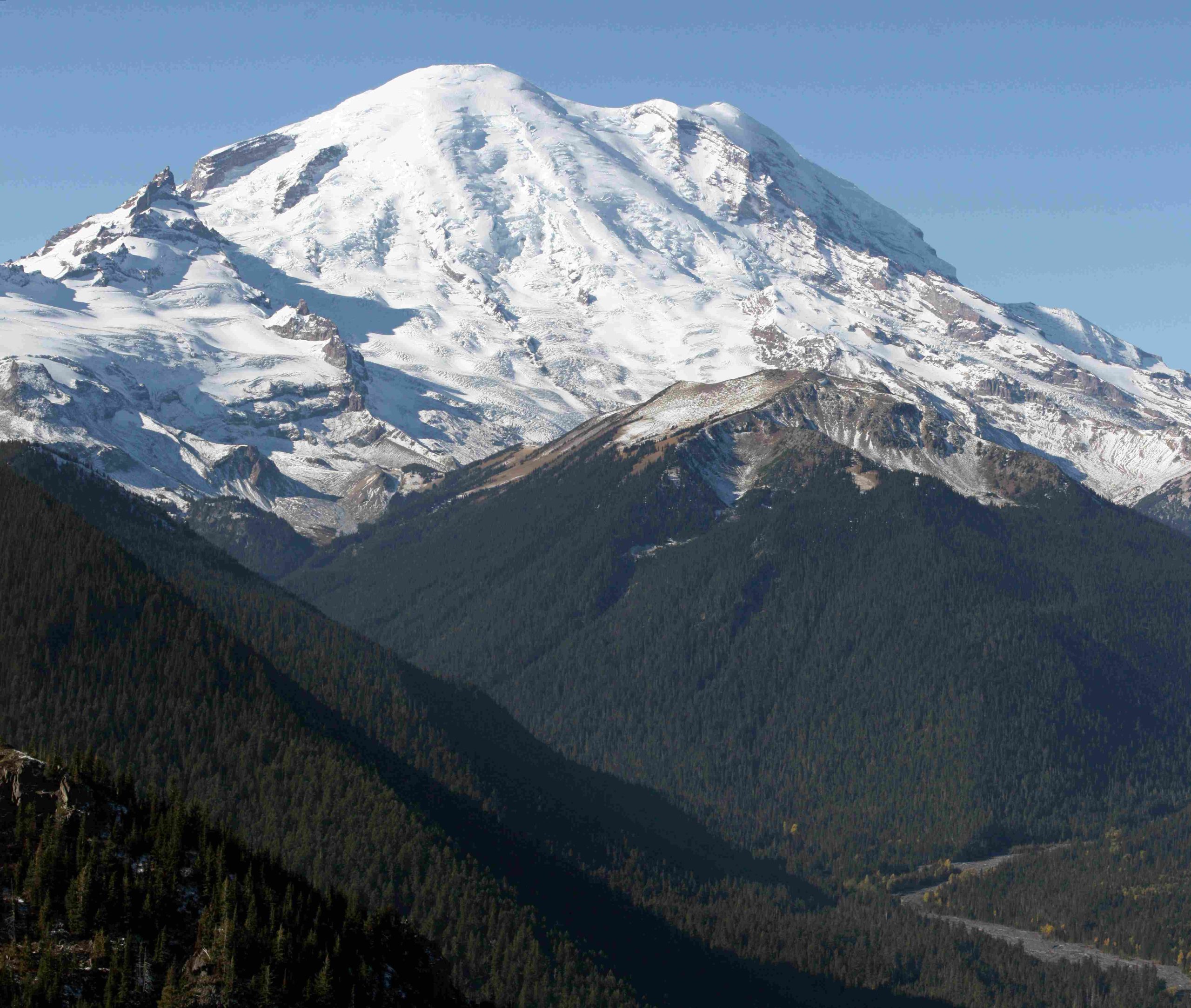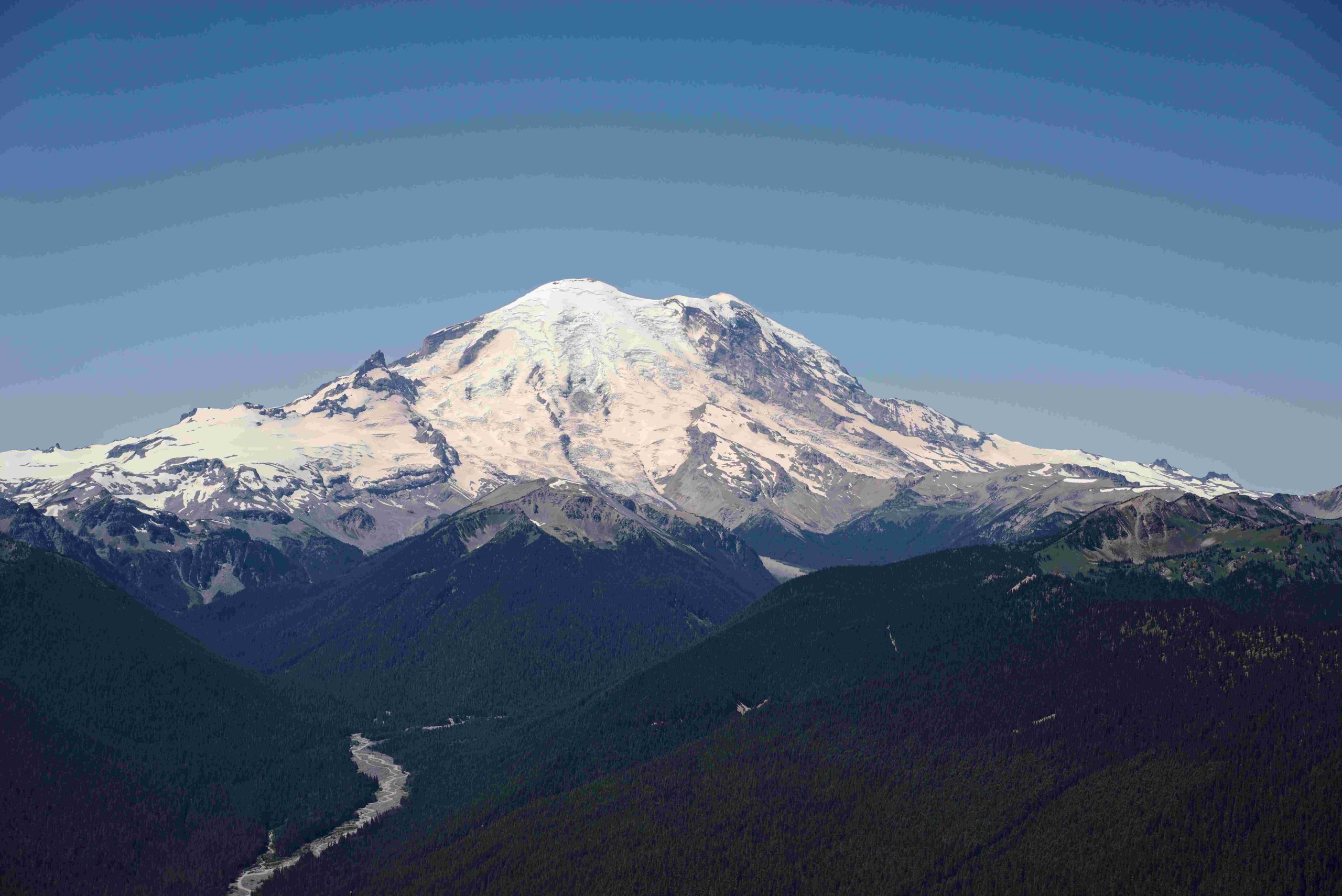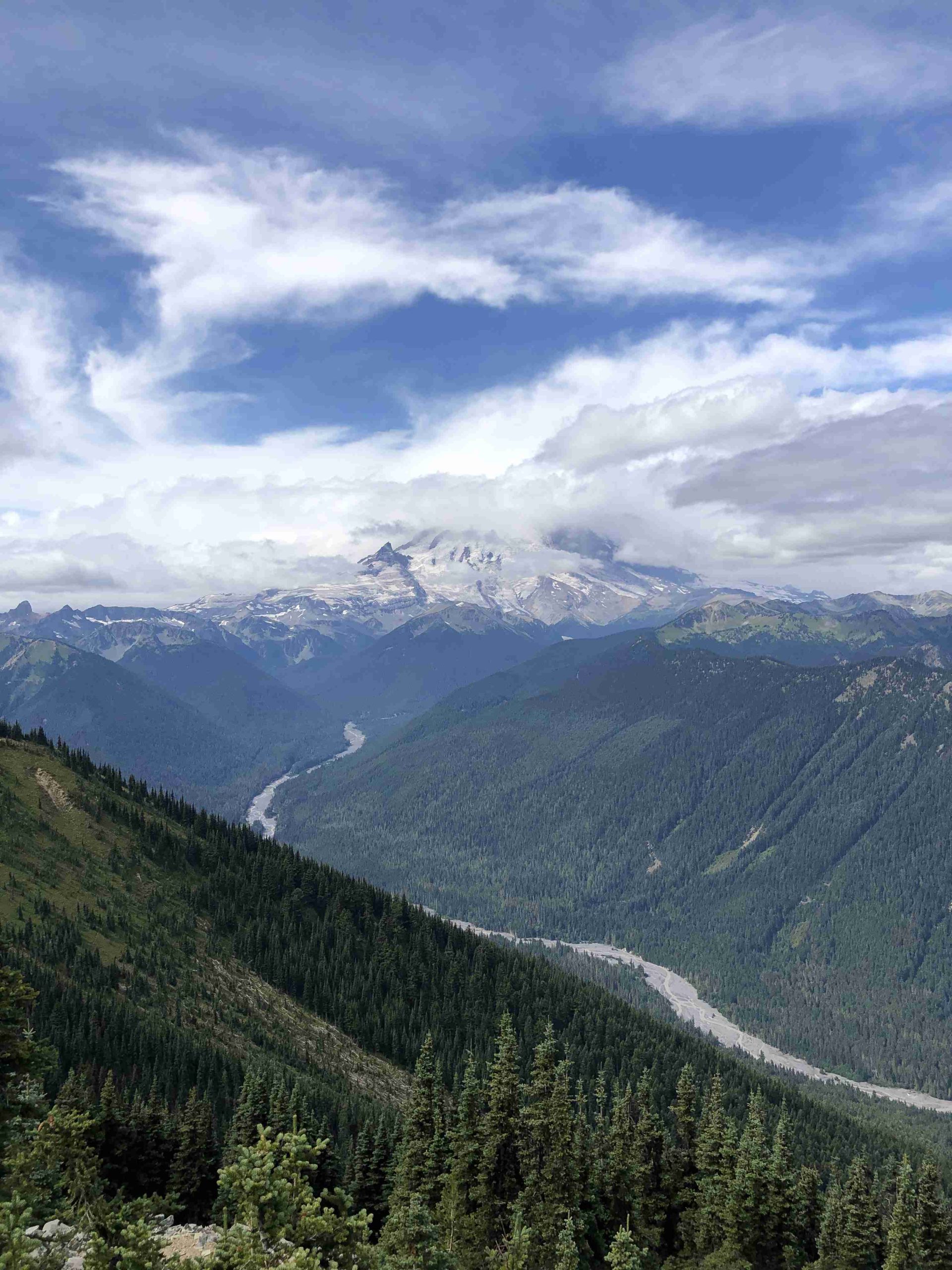Mount Rainier cap clouds are a mesmerizing meteorological phenomenon that occurs when moist air is forced upward by the mountain’s massive structure. These distinctive cloud formations, resembling a cap or halo atop the peak, are not only visually stunning but also indicative of specific weather patterns. Understanding the formation, best viewing locations, and impact on visibility of these clouds can enhance both the experience of visitors and the skills of photographers seeking to capture this natural wonder.
What Are the Specific Weather Patterns for Cap Cloud Formation on Mount Rainier?

The formation of cap clouds on Mount Rainier is a complex interplay of various atmospheric conditions:
-
Moist Air: The primary ingredient is air that’s nearly saturated with moisture, often originating from the Pacific Ocean.
-
Orographic Lifting: As this moist air encounters Mount Rainier, it’s forced to rise along the mountain’s slopes.
-
Temperature Change: During ascent, the air cools adiabatically. If it reaches its dew point, condensation occurs, forming the cap cloud.
-
Wind Conditions:
- Moderate to strong winds are typically present
- Wind speeds can range from 25-30 mph at lower elevations
-
At higher elevations like Camp Muir, winds can exceed 150 mph
-
Laminar Flow: The air flow needs to be relatively smooth and consistent with height, with minimal turbulence or wind shear.
This combination of factors creates the perfect environment for cap clouds to form, often preceding larger weather systems.
Where Are the Best Locations for Capturing Mount Rainier Cap Cloud Photography?

For photographers and enthusiasts looking to capture the majesty of Mount Rainier’s cap clouds, several prime locations offer spectacular views:
-
Seattle Space Needle: Offers a unique urban foreground with Mount Rainier and its cap cloud in the background.
-
Paradise Valley: Provides close-up views of the mountain and its cloud formations.
-
Sunrise Visitor Center: The highest point in the park accessible by vehicle, offering panoramic views.
-
Reflection Lakes: Opportunities for capturing the mountain and its cap cloud reflected in still waters.
-
Tipsoo Lake: Another excellent spot for reflection shots, especially during sunrise or sunset.
| Location | Elevation | Best Time | Unique Feature |
|---|---|---|---|
| Seattle Space Needle | 520 ft | Sunset | Urban foreground |
| Paradise Valley | 5,400 ft | Morning | Close-up views |
| Sunrise Visitor Center | 6,400 ft | Sunrise | Highest accessible point |
| Reflection Lakes | 4,900 ft | Early morning | Mirror-like reflections |
| Tipsoo Lake | 5,300 ft | Sunrise/Sunset | Colorful sky reflections |
When Is the Optimal Time to Photograph Mount Rainier Cap Clouds?
Timing is crucial for capturing the perfect shot of Mount Rainier’s cap clouds:
- Early Morning:
- Soft, golden light enhances the cloud’s appearance
-
Often clearer skies before afternoon cloud buildup
-
Late Afternoon to Sunset:
- Dramatic lighting as the sun sets
-
Potential for colorful skies complementing the cap cloud
-
Pre-Weather System:
- Cap clouds often form hours before a larger weather system moves in
-
Monitor weather forecasts for potential cloud formation
-
Seasonal Considerations:
- Summer offers more stable weather but can be crowded
- Spring and fall provide dynamic weather conditions and fewer crowds
- Winter can offer stunning snow-covered landscapes but with challenging access
How Do Cap Clouds Affect Visibility and Accessibility on Mount Rainier?
The presence of cap clouds can significantly impact both visibility and accessibility on Mount Rainier:
- Visibility Effects:
- Cap clouds often indicate strong winds and potential whiteout conditions
- Can reduce visibility drastically, especially at higher elevations
-
May produce new snow or re-suspend existing snow, further limiting visibility
-
Trail Accessibility:
- Lower elevations may experience clear weather while higher trails are cloud-covered
- Icy conditions can develop rapidly, making trails treacherous
-
Sudden weather changes associated with cap clouds can catch hikers off-guard
-
Climbing Conditions:
- Cap clouds can signal approaching storms, crucial information for climbers
- Strong winds associated with these formations can make climbing dangerous
-
Reduced visibility can complicate navigation and increase the risk of disorientation
-
Seasonal Impact:
- Winter and spring see more frequent cap cloud formation and associated challenging conditions
- Summer months generally offer better visibility but can still experience sudden cloud cover at higher elevations
Are There Organized Tours or Photography Workshops Focused on Mount Rainier Cap Clouds?
While there aren’t specific tours dedicated solely to Mount Rainier cap clouds, several options can enhance your experience:
- Guided Climbing Tours:
- Companies like Rainier Mountain Guides and International Mountain Guides offer expeditions
- Guides provide insights on weather patterns, including cap cloud formation
-
Learn to interpret weather signs for safer climbing
-
Photography Workshops:
- Local photography clubs often organize outings to capture Mount Rainier’s changing moods
- Professional photographers sometimes lead workshops in the area, covering landscape and weather photography
-
National Park Service occasionally offers photography walks with rangers
-
Weather Education Programs:
- Some outdoor education centers in the Pacific Northwest offer courses on mountain weather patterns
-
These can provide in-depth understanding of phenomena like cap clouds
-
Custom Tours:
- Local guides may offer personalized tours focusing on photography or weather observation
- Can be tailored to capture specific conditions like cap clouds
By understanding the formation, best viewing locations, and impact of Mount Rainier cap clouds, visitors and photographers can better appreciate and capture this stunning natural phenomenon. Whether you’re a casual observer or a dedicated photographer, the sight of Mount Rainier crowned with its cap cloud is a testament to the raw beauty and power of nature in the Pacific Northwest.
References:
1. KNKX Public Radio – Heavy rain, big snow, high winds, weird clouds — how Mount Rainier affects the weather
2. Cliff Mass Weather Blog – When Rainier Wears Its Cap and Strong Winds Hit Puget Sound
3. Mount Rainier Climbing Blog – Weather Ed- Cloud Caps and Lenticulars

